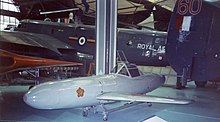Radical 182
| 風 风 | ||
|---|---|---|
| 181 ⾴ ◄ | 182 | ► ⾶ 183 |
| Pinyin : | fēng (= wind) | |
| Zhuyin : | ㄈ ㄥ | |
| Hiragana : | か ぜ kaze | |
| Kanji : | 風 kaze (= wind) | |
| Hangul : | 바람 | |
| Sinocorean : | 풍 (= wind) | |
| Trigram : |
|
|
| Codepoint : | U + 98A8 98CE |
|
| Stroke sequence : |
|
|
Radical 182 , meaning “ wind ”, is one of eleven of the 214 traditional radicals in Chinese writing that are written with nine strokes.
With 16 character combinations in Mathews' Chinese-English Dictionary, there are relatively few characters that can be found under this radical in the lexicon.
Radikal Wind only occupies 182nd position in the long - character list of traditional radicals , which consists of 214 radicals. It can be found in a completely different place in modern abbreviation dictionaries. In the New Chinese-German Dictionary from the People's Republic of China, for example, it is in 121st position.
According to ancient beliefs, insects are born from the vapors of the earth. This is how the original symbol can be explained, which represents the wind with the elements sun, movement and expansion. With the simplification, the insects were also erased.
The radical acts as a sound carrier in 疯 (= crazy), 枫 (= maple), 砜 (= sulfone ), 讽 (= mock).
As a bearer of meaning, the character 風 brings the meaning wind into its characters as in 飒 (= wind noise), 飘 (= flutter), 飓 (in 飓风 = hurricane), 飙 (= hurricane).
In the left position in the symbol 風, the second line in the spout is to be extended to the right so that it forms half of the enclosure as in 飕 (= whizzing).
Spelling variant of the radical: Abbreviation (PR China): 风
Typhoon refers to a tropical cyclone in the northwestern part of the Pacific, known in other parts of the world as a hurricane or cyclone. The word typhoon comes from Arabic in Portuguese. ṭūfān (= "flood"), this perhaps from the Greek typhōn (= "strong storm"); reinforced by Chinese taifeng (= "strong wind").
The Japanese term Kamikaze denotes the “ divine wind ” or “ breath of God ” in the form of two typhoons that failed two Mongolian attempts at conquering Kublai Khan in the 13th century (see also Kamikaze (Mongol invasion) ). Shimpū Tokkōtai (jpn. 神 風 特 攻 隊, Kamikaze special troops) was a Japanese special air force in World War II. Tokkōtai is an abbreviation for tokubetsu · kōgekitai (特別 攻 撃 隊) = "special attack force". The fact that the well-known term kamikaze does not appear in the Japanese name is due to a peculiarity of the Japanese language, which allows certain characters (the Kanji) to be pronounced differently depending on the context. Shimpū and Kamikaze are two different pronunciations of the characters 神 風. The term kamikaze itself stands in German for a suicide attack on military targets.
The abbreviation of the radical 182 is 風; with 風 character combinations from U + 98A8 to 飍 U + 98EB are coded, then with 风 from U + 98EC to 飚 U + 98DA.
Character combinations ruled by radical 182

| Strokes | character | |
|---|---|---|
| + 0 | 風 | 风
|
| + 2 | 䫸 |
|
| + 3 | 䫹 颩 颪 | 飏
|
| + 4 | 䫺 䫻 䫼 䫽 颫 颬 |
|
| + 5 | 䫾 䫿 䬀 䬁 䬂 䬃 颭 颮 颯 颰 颱 | 飐 飑 飒
|
| + 6 | 䬄 䬅 颲 颳 |
|
| + 7 | 䬆 䬇 䬈 䬉 䬊 颴 颵 |
|
| + 8 | 䬋 䬌 䬍 䬎 䬏 䬐 颶 颷 | 飓
|
| + 9 | 䬑 䬒 䬓 䬔 䬕 䬖 䬗 颸 颹 颺 | 飔 飖
|
| +10 | 䬘 䬙 䬚 颻 颼 颽 颾 颿 飀 | 飕 飗
|
| +11 | 䬛 䬜 飁 飂 飃 飄 | 飘
|
| +12 | 䬝 飅 飆 飇 飈 飉 飊 | 飙 飚
|
| +13 | 飋 |
|
| +14 | 䬞
|
|
| +15 | 䬟 |
|
| +18 | 飌 飍 |
|
In the Unicode block Kangxi radicals , radical 182 is coded under the code point number 12.213 (U + 2FB5).
literature
- Edoardo Fazzioli : Painted Words. 214 Chinese characters - from picture to concept . Marixverlag, Wiesbaden 2004, ISBN 3-937715-34-7 , p. 190 .
- For detailed references, see List of Traditional Radicals: Literature
Web links
- Xiù cai.oai.de (PDF; 1.72 MB) Explanation of Radikal 182 on pages 84 and 145

